Your Cart is Empty
When you buy a book, we plant a tree
As militant attacks get closer, Katarina Höije tells the story of a Malian town defiantly continuing its annual tradition of replastering a mosque

The evening before the crépissage, the annual replastering of the Great Mosque of Djenné, Balphady Yaro is throwing a party for his friends and neighbors in the town’s Konofia neighborhood.
Rickety plastic chairs and tables line the winding streets around Djenné’s main square, where the mosque looms over the town’s low mud-brick houses. There are plates of riz au grastasty rice with meat and vegetables—and chilled soft drinks. Ivorian Coupé-Décalé music reverberates on soft mud walls. Djenné, a town of about 35,000 in the central region of Mali, is famous for its traditional mud-brick architecture and its UNESCO-protected mosque. Fifty-two feet (16 meters) high and built on a 300-foot-long (90-meter) platform to protect it from flooding, the mosque is the world’s largest mud-brick building.
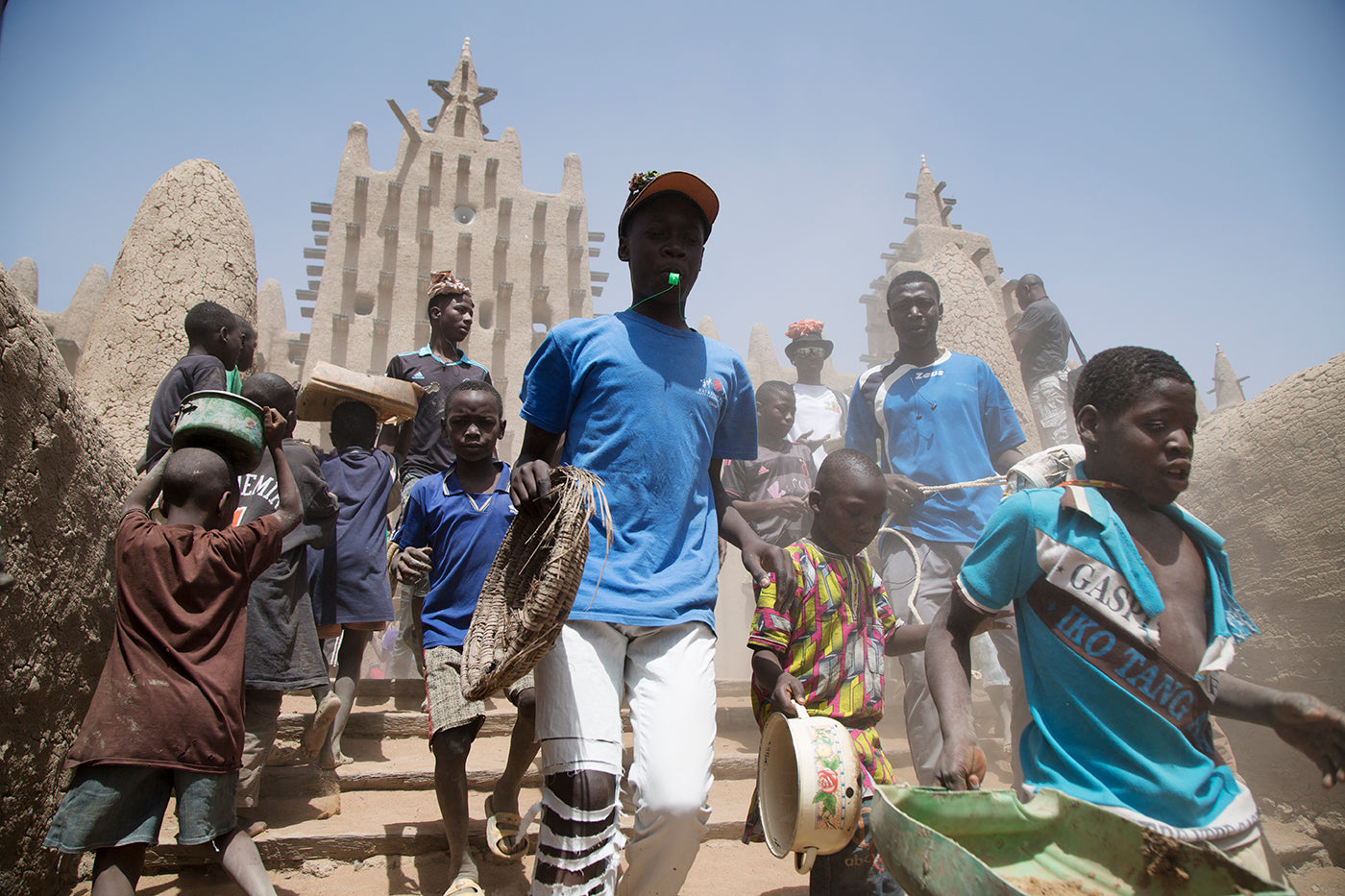
Touching up its walls each year—crépissage, the French word for ‘plastering’—is a proud and exuberant ritual that involves the whole town. “The crépissage is the most important event of the year, even bigger than Eid al-Fitr, Tabaski (the Malian equivalent of Christmas), and marking the end of Ramadan,” says Yaro, a 30-year-old lawyer and host of the celebration known as 'la nuit de veille.' Sitting under a tarpaulin strung between two neem trees, Yaro watches as the crowds sway through the street.
The partygoers won’t sleep until after the event. The revelry will strengthen them ahead of tomorrow’s big task, Yaro claims, sipping a soft drink. “Tonight we party, and tomorrow we will celebrate our mosque and Djenné’s cultural heritage.” The residents of Djenné come together to put a new layer of clay on their mosque every April, just before the rainy season. The crépissage is both a necessary maintenance task to prevent the mosque’s walls from crumbling and an elaborate festival that celebrates Djenné’s heritage, faith, and community. It’s also an act of defiance.
The increasing instability in Mali’s central region—fueled by inter-tribal conflicts and growing numbers of militant and jihadist groups exploiting the absence of state security forces—now threatens Djenné and its sacred annual ritual. Local militants—some linked to the Group for the Support of Islam and Muslims (JNIM), formed by the 2017 merger of several extremist groups operating in Mali—have invaded towns, destroyed markets, and spread their influence in central Mali.
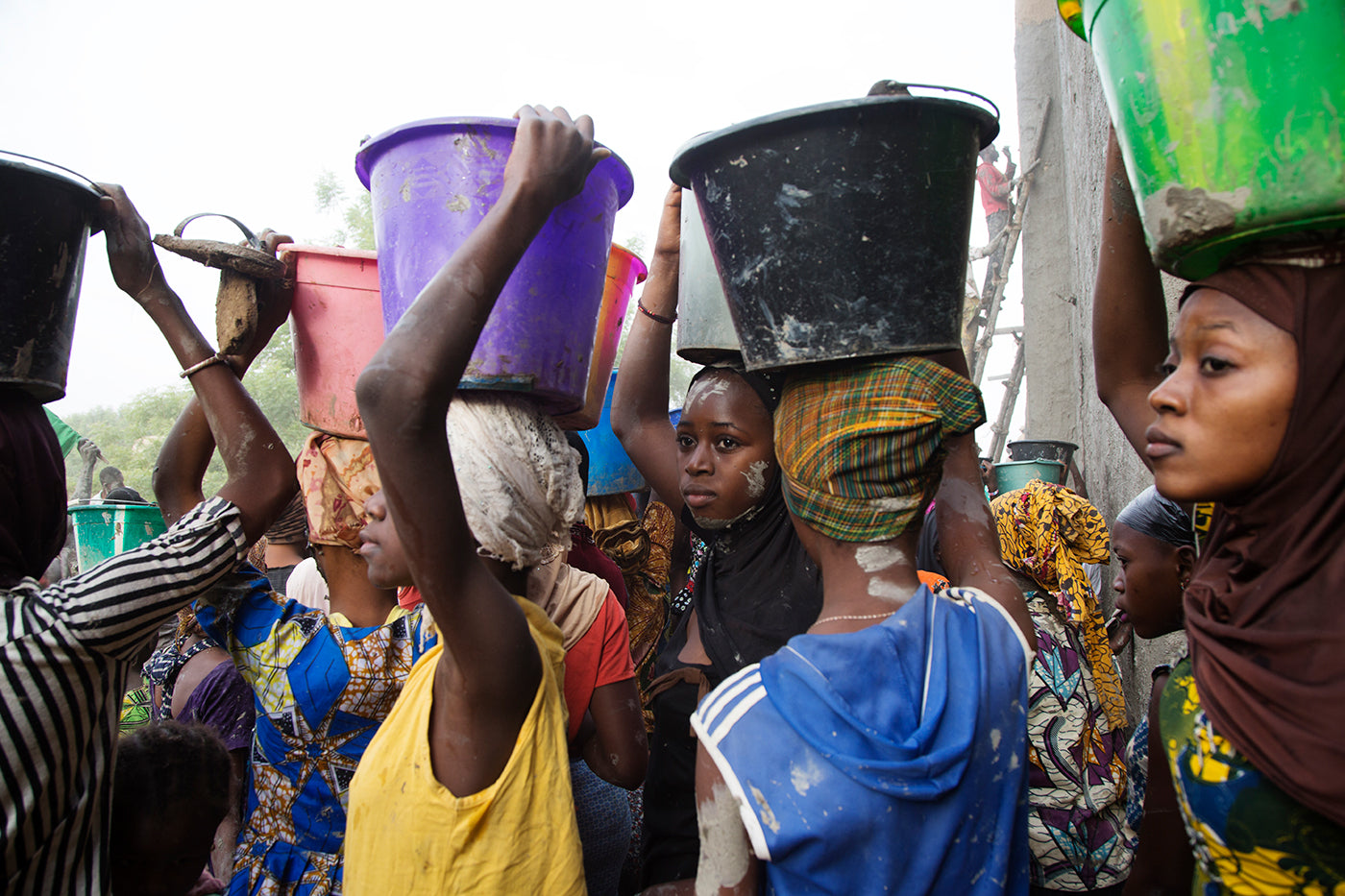
So far, Djenné and its mosque have been spared, but the security situation in the region continues to deteriorate, and more frequent attacks are being carried out in Djenné’s orbit. “We knew that the militants were getting closer to Djenné,” says town chief Sidi Yéya Maiga at his home the day before the crépissage. This year the town council even took the extraordinary step of debating whether or not to cancel their cherished tradition.
In an act of collective resistance, they decided the show must go on. On the day before the crépissage, Nouhoum Touré, the master among Djenné’s 250 masons, heads down to the riverbank to check on the mud that has been left to soak for 20 days.
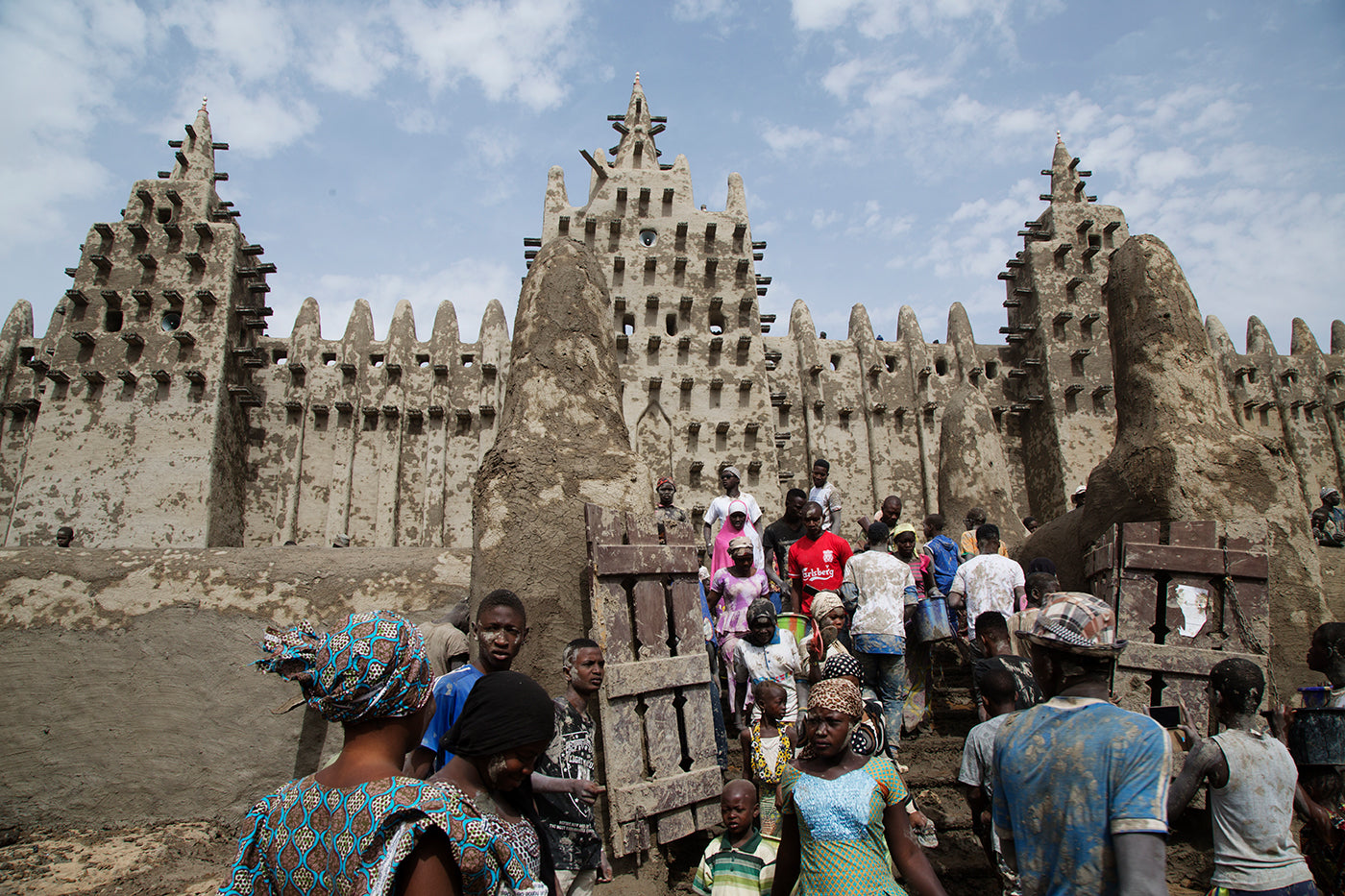
It’s the height of the dry season, and the river has shrunk to shallow puddles and inlets. The round pools that store clay until it’s time for the crépissage look like pockmarks on the riverbed. The mud comes from further down the river and is transported here by trucks and donkey carts. Younger masons then break the blocks into smaller chunks and mix them with water. In the final stages, rice husks are added to the mud, turning it into a soft and sticky paste. The rice works like a glue, holding the mud together and keeping it from cracking as it dries. The young masons then carry the mixture, in wicker baskets, to pits in front of the mosque in preparation for the event.
Early in the morning on the long-awaited day of the crépissage, Djenné’s residents gather by the mosque and wait for Touré to smear the first blob of mud on the wall. This is the starting gun.
There is a roar from the crowd as dozens of young men—some masons, some apprentices—run to the mosque. Smaller groups of boys raise wooden ladders against the mosque wall. Carrying wicker baskets full of dripping-wet clay from the pits next to the mosque, the young men begin scrambling up the façade, using ladders to reach the wooden poles protruding from the walls. Perching perilously on the wooden scaffolding, they pick up large blobs of clay and smear them on the walls.
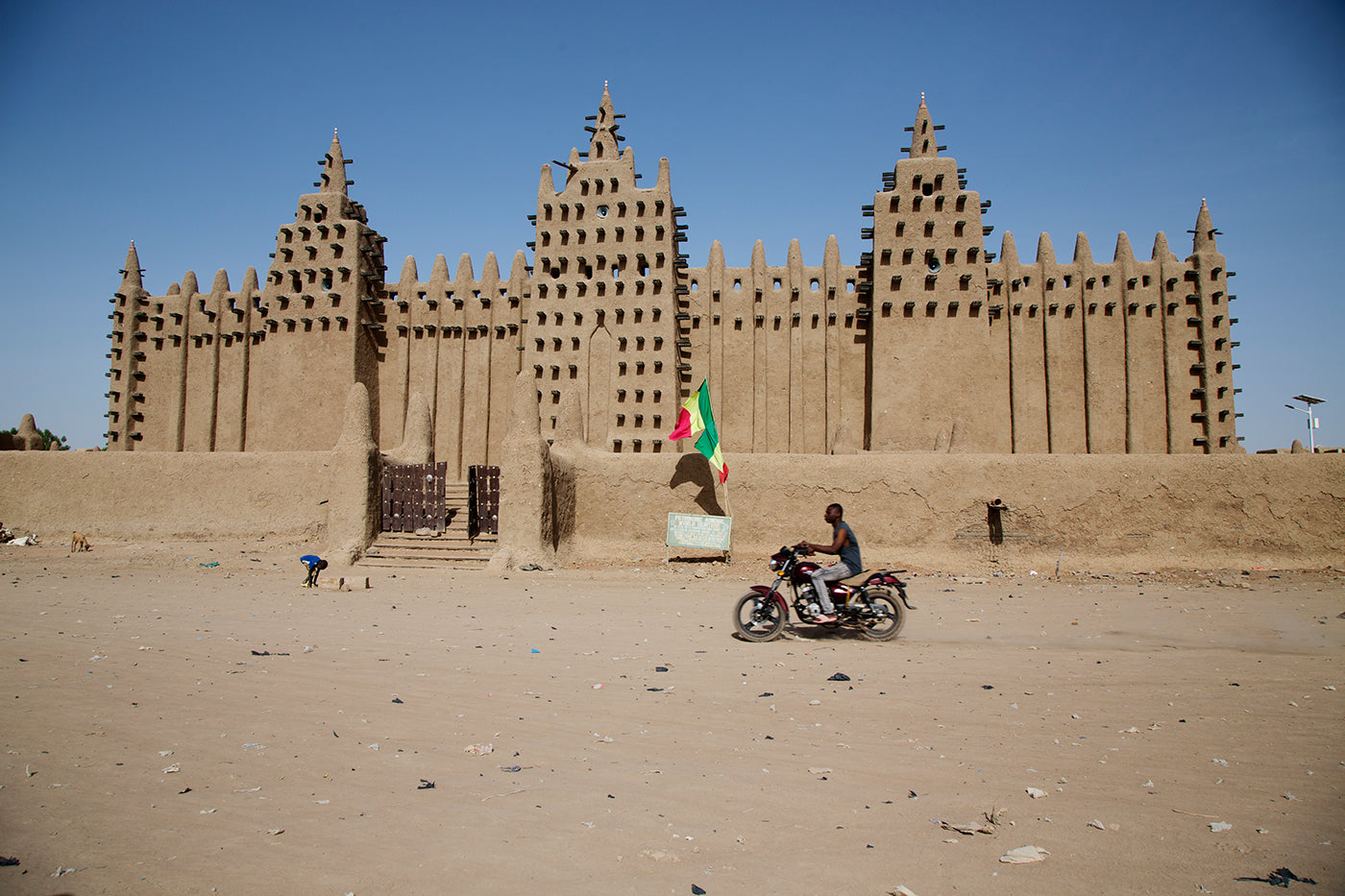
Nientao, the mosque’s guardian, weaves through the crowd, his pockets filled with sweets for the workers. Thousands of muddy feet trample the paths around the mosque. As the sun begins to rise over Djenné, turning shapeless shadows into dark silhouettes, a group of boys and masons tackle the minarets from the roof of the mosque.
Four hours later, the morning sun shines on the newly plastered mosque. Dark, wet clay patches on the dried mud give it a sickly look. Touré is covered in mud all the way from his plastic sandals, which have miraculously stayed on his feet, to the top of his turban. “I think we did very well,” he says, sitting in the shade of the mosque. “Normally, we re-mud the mosque over two days. This time we managed to get it done in only one day.”
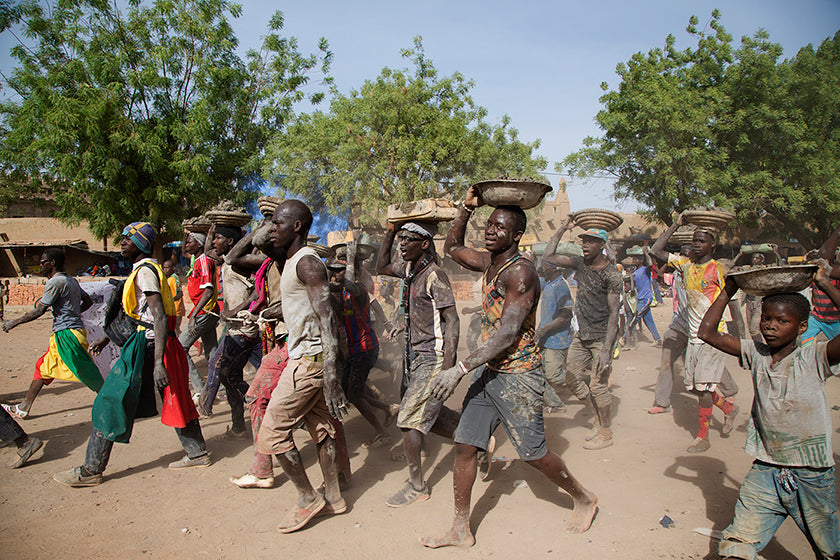
A little later, there is a crack as the loudspeakers come on, then the sound of Djenné’s mayor, Balfine Yaro, clearing his throat. Everyone looks on in silence as he makes his way to the front of the crowd. He declares Djenneka Raws the winning team. Djelika Kantao and Yoboucaïna have prevailed. For the winners, there is pride, honor, and a cash prize of 50,000 West African francs, or about $90 (€80). “With the money,” says Kantao, beaming with pride, “I will buy new solar panels for the neighborhood, so we no longer have to live in darkness.”
Delve into a world of traditions being kept alive unique individuals through The New Traditional. This story and images are featured in the book.